On a mid-December day in 2011, London mayor Boris Johnson posed for photographs in Trafalgar Square standing triumphantly aboard the policy result that symbolises most completely the thinking that has guided his seven years at City Hall. It was the public debut of what was then called his New Bus for London but was already better known as the New Routemaster or “Boris Bus”.
Leaning out from the bus’s open rear doorway, Johnson was at his most ebullient. “Christmas has arrived early,” he boomed, declaring that the red paint and “sinuous curves” of the vehicle would “brighten the day of all who see it humming along our great city’s streets”. The bus was “revolutionary,” he went on, referring to its new form of diesel-electric hybrid engine, which would make it the “cleanest, greenest” bus in town. It was a patriotic bus, too, “the latest, greatest masterpiece of British engineering and design”. His boast embraced not just the bus’s gleaming shape and claret interior, provided by Heatherwick Studios of Kings Cross, but also the respected Wrightbus company of Ballymena, Northern Ireland, which built it.
But most importantly in terms of its political statement, Johnson saw the Boris Bus as a revivalist throwback to the original Routemaster, a bespoke public transport classic that had worked the capital’s streets from February 1956 until December 2005. Two features of the new bus sought to revive its distinctive character. One was the rear doorway that could be left open while the bus was in transit, enabling passengers to board or exit between stops – to hop on or hop off at will. The original Routemaster, in fact, had no door at the back at all, meaning the platform was open permanently. A floor-to-ceiling pole, which people could hold on to to avoid falling off, was installed in the new bus too.

The other feature of the new bus was to be a second crew member, accompanying the driver. Routemasters had been staffed with bus conductors, who patrolled its double decks selling tickets from portable machines, assisting passengers and ringing the bus’s bell to tell the driver when it was safe to pull away from the kerb. The introduction of modern, single-person-operated buses from 1971 had paved the way for the beginning of the Routemaster’s eventual end.
But for Johnson, the Routemaster’s demise had come to represent an electoral opportunity. Their nemesis was his predecessor as mayor, Labour’s Ken Livingstone, who’d done away with them despite once saying that anyone who did so would have to be “a ghastly, dehumanised moron”. Johnson fought Livingstone in the 2008 mayoral election campaign pledging to commission a “21st-century Routemaster”, open rear platform, conductors and all.
Never mind that in the age of the Oyster smart card, diminishing numbers of paper tickets were being sold. Never mind that those that were purchased were issued from a ticket machine mounted in the driver’s cab. Johnson expressed no doubts that London voters would be enthused by his new bus and all it stood for. He stuck by the project throughout the 2008 campaign, despite being repeatedly unable to answer questions about how much it would cost.
This revivalist pitch came with a companion pledge to remove from London’s streets another sort of bus, the single decker, two-part, Mercedes-Benz Citaro “bendy buses” that Livingstone had introduced. Far longer than other buses, bendies were unpopular with cyclists and motorists and susceptible to fare-dodging. But with their three doors and high passenger capacities they were efficient at moving people around speedily. Disabled people and parents pushing buggies found them particularly congenial.
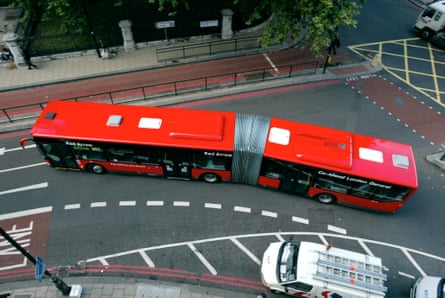
For Johnson, though, they were an alien contamination, more suited to wide foreign boulevards than narrow London streets. Thus, the London bus became what political strategists call a wedge issue, splitting and mobilising opinion. Helped by his chums on an absurdly partisan London Evening Standard, Johnson’s taste in buses helped his campaign to sell a larger opposition, depicting Livingstone as a cynical, soulless modernist and “Good old Boris” as a jovial, can-do traditionalist.
And for Johnson himself, the meaning of the new bus ran still deeper. He would later portray the new bus as a metaphor for freedom, independence and enterprise; as quite literally a vehicle for his entire political philosophy. “Yes, of course there is risk,” he later wrote of the open platform, “but that risk is manageable … It is, as far as I know, one of the few recent examples of a public policy that actually gives back to sentient and responsible adults the chance to take an extra risk in return for a specific reward.”
The same principle should be extended, he argued, to the psychology of Britain as a whole: “I worry that in the post-crisis world, we have become all too paranoid, too risk-averse. Yes, the banks made grotesque errors, largely because they could not understand the risks they were taking. But unless we allow businesses and banks to take reasonable risks, they will never hit the jackpot at all.” He wrote of a tram in San Francisco from which passengers are allowed to hang “like gibbons”. No wonder Britain hasn’t produced a Facebook or a Google, he concluded, despairingly.
At first, the new bus project motored merrily. Like the new mayor himself, it beguiled with its upbeat novelty. A competition was held to produce ideas for the new bus, with the results announced by Johnson just before his first Christmas as mayor. But critics were already circling. Johnson had previously cut several TfL projects in gestation – including an extension of the DLR to Dagenham Dock and the cross-river tram, a wheeze of Livingstone’s to link Camden and south London – believing that Livingstone had been profligate. So who would pay for the realisation of his new bus vision?
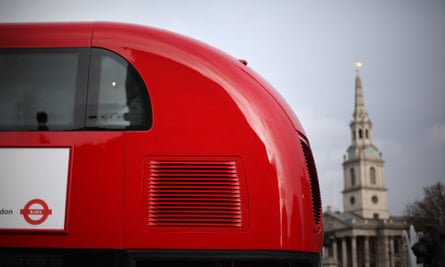
In September 2009, Johnson told the Green party’s Jenny Jones: “I imagine the cost of the development of the new bus will be borne by the industry.” In fact, TfL had already committed £3m for development costs. And at the announcement of the design contest results the then TfL commissioner Peter Hendy had anticipated paying the eventual manufacturer “some element of the premium for a proper design.”
In December, Wrightbus secured the contract. TfL promised that the company would deliver something innovative and ingenious as well as nostalgic. TfL said it would be 15% more fuel efficient than other types of hybrid already being used in London, as well as pumping fewer toxic emissions into the air. There was also an attempt to build into the new bus the great strength of the bendy - the ease and speed with which people could board it or disembark. Like the bendy, the new bus would have three doors. It would also have two staircases, another measure to reduce dwell times at stops.
Johnson congratulated Londoners on their stoic patience while waiting for the bus he assured them they were longing for. They could be confident that it would arrive in time for the 2012 Olympic Games, he said. This promise was duly kept, though not before the cost to TfL had risen sharply. By early 2010, £11m had been earmarked for the development of the new bus covering mock-ups, testing, a prototype and the first five production models. Cynics did some hostile long division: £2.25m per bus when established hybrids then cost no more than £350,000 each. Why not spend the £11m on more of those?
Meanwhile, in Ballymena, Wrightbus got stuck into their task. In November 2011, journalists flew out to see the first working prototype to come off the production line. Heatherwick had installed grooved staircase flooring, swirl-patterned seat moquette and moody interior lighting all referencing the Routemasters of yore. Some thought the exterior fussy, comparing it unfavourably with the retired legend’s spare utility. The general reception, though, was friendly.
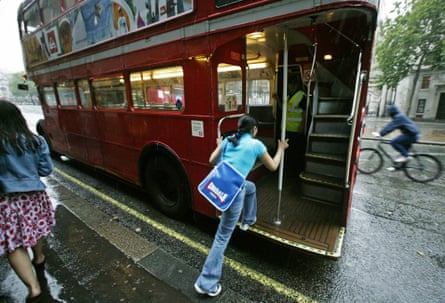
Questions were still being asked about money. TfL said that £7.8m of the project budget had been paid to Wrightbus and that the initial production model order had been increased from five to eight. They defended the outlay, partly by saying that the new bus would in future earn money from sales to other cities. Northern Ireland secretary Owen Patterson was on hand at the Wrightbus factory. He called the bus “a fantastic, long-term export opportunity.”
In early 2012, as promised, the very first Boris Bus to carry passengers emerged from a garage in east London. By then, the purging of the bendies had long begun – the new buses did not replace them directly. Symbolically, though, the first of Johnson’s hallmark progenies graced a route that bendies had snaked along and where the Routemaster had met its end – the number 38, which links Hackney with Victoria.
As the packed bus made its way through Dalston and on to Islington, its passengers, a mixture of journalists, bus buffs and a few slightly bemused regular passengers, compared notes. Were the seats too close together? Were the pairs facing each other on the lower deck an improvement on the usual forward-facing ranks? How about the atmospheric decor? Upstairs, Dean Nicholas from the website Londonist expressed concerns, drawing attention to the steamed-up windows which, unlike on other buses, could not be opened. He later wrote: “If things become sweaty on a mild February day, the bus might be a less pleasant place to be come summer.”
It was a foretaste of trouble to come. In September 2012 the TfL board authorised the purchase of 600 of the new buses over a period of three years. Unusually, TfL itself would meet the cost, rather than the various bus operating companies it contracts. That cost was later revealed by TfL to be £212m or roughly £350,000 per bus. Responding to speculation that they would cost £330,000, Johnson had previously told Liberal Democrat Caroline Pidgeon that he expected the price to be “considerably cheaper” than that. By then, existing hybrids could have been bought for not much more than £300,000.
In February 2013, the first recruitment advertisements for conductors appeared, although Metroline, the bus operator that placed them, described the position as that of “customer assistant”. The salary wasn’t stated, but when in Ballymena Johnson had put the put total cost of employing these second crew members at around £60,000 each per year (he wasn’t far wrong - it turned out to be £62,000). This too was to be met by TfL. The Green party calculated that these extra staff would cost £37m a year by 2016, when all 600 new buses were expected to be in use. Johnson disputed this: apart from anything else, he explained, the rear platform would not, in fact, be kept open all the time, so fewer “customer assistants” would be required.
Then came the biggest day yet in the Boris Bus story, the full conversion of an entire London route. That honour was bestowed on Route 24, which takes a glamorous path between Hampstead and Pimlico via Trafalgar Square. Peter Hendy drove the first one out of the garage. During Livingstone’s mayoralty, some of his opponents had regarded TfL as a communist contagion and called for Hendy’s head. They had reckoned without his deep passion for buses. Hendy actually owns a retired Routemaster. For him and his surface transport boss, Leon Daniels, getting the new bus off Johnson’s manifesto pages and on to London’s streets had been a joy. “It’s fabulous,” Hendy said.
Not everyone agreed. As Londonist’s reporter had predicted, things could get sweaty on board. Passengers made known their disquiet: it was “unbearable”, a “mobile sauna”; the air-cooling system wasn’t up to scratch; the bus should be called the “Roastmaster” instead. Were these people Boris-bashers? Some, undoubtedly. But ITV correspondent Simon Harris measured temperatures as high as 38 degrees.
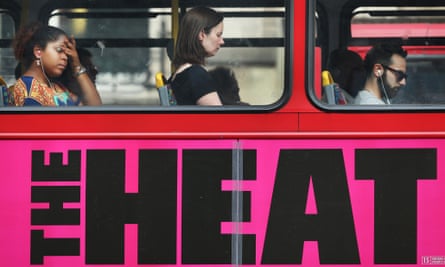
One sunny lunchtime the Guardian ran an experiment on route 38, riding from Hackney to Holborn on a conventional double decker and returning on a Boris Bus, armed with a cheap thermometer. This found temperatures on the Boris Bus to be only slightly higher, but the key difference was ventilation. With all its top deck windows open and a breeze blowing through, the ordinary bus felt pleasantly balmy. The Boris bus, by contrast was stuffy. The air-cooling system was noisy. Leg stretching was less easy, adding to the discomfort of the ride.
Further routes converted: the 11, 9, 390 and more. The summer of 2014 brought more outcry against hot conditions on the new bus. That October, TfL said it would be ordering 200 more. But the continuity was not seamless. TfL board papers revealed that the air-cooling systems were being assessed with the aiming of “improving comfort”. An ongoing upgrade to Euro VI environmental standards means still less damage to air quality, but the board papers acknowledged that these gains are now “marginal compared to standard Euro VI hybrids”.
The board papers also contained a small bombshell: the next batch of buses would be entirely one person operated. In other words, none would have conductors at any time. No conductors already meant no open rear platform between stops. The reason? Health and safety. And then, in June this year, came a further blow to the buccaneering “hop on, hop off” principle. TfL confirmed that Wrightbus is to radically modify the rear door. To remain open between stops, it has been made in such a way that it folds inwards. But on the newest models, it will fold outwards, like regular bus doors. This means the rear door will have to be kept closed when the bus is in motion. In other words, the hop-on, hop-off option is to be designed out of the very structure of the bus. The reason for all this is very simple – as austerity pinches the finances of TfL, Johnson’s new wave conductors are an indulgence it can’t afford.

Where does this leave the transport initiative, which, even more than his cycle hire scheme, has been the signature Boris Johnson policy? The name New Routemaster is now officially applied, with plaques affixed to rear staircases to prove it. Yet with no hop on, hop off facility, what has the bus still in common with its famous near namesake from the past? Only being a bespoke London bus, it seems. And a London bus is what it has remained. Hopes of export orders have come to nothing. As Johnson sees out his final year at City Hall, not one other city, either in Britain or abroad, wants to buy the vehicular expression of his strongest political beliefs.
Potential successors are plotting its demise. For Labour, Sadiq Khan speaks of a moratorium on purchases and Tessa Jowell says that by 2020 she’d want TfL buying nothing but pure-electric buses, one of which will by trialed in London later this year. Caroline Pidgeon, likely to become the Lib Dem candidate, would take the same zero-emission path. The Greens have been sceptics from the start. Only Conservative intentions are unclear: Zac Goldsmith, an ally of Johnson and the favourite to run for the Tories, has not responded to the Guardian’s inquiry.
As for the present mayor, one of his PR team provided a stout defence, pointing out that the poor performance of some batteries in early models – a recently discovered phenomenon seized on by critics as an example of how the buses were less green than advertised, but which actually only increased the buses’s pollution very slightly, and has since been fixed – does not alter the fact that the bus remains one of the lowest emitting in the world. The same statement asserts that the bus’s expected 14-year life span and low fuel consumption help to justify the high unit price and the development costs. And what is more: “The mayor is of the firm view that the New Routemaster is a stunningly designed and environmentally friendly bus that is an icon of London’s transport network and has been met enthusiastically by Londoners.”
Has it? TfL has reported favourable customer feedback, but little detail has been made available. Anecdotal evidence suggests a range of views. For some, the New Routemaster’s stylised lines and sparkly headlights are gaudy, for others they are bold. For some, its furnishings palette and mood lights are too dingy, for others they conjure luxury, even romance. Is the New Routemaster an emblem of London’s special brilliance or a triumph of ostentation over results? That may depend on how you feel about the mayor.
Here is a full archive of Dave Hill’s coverage of the New Routemaster.
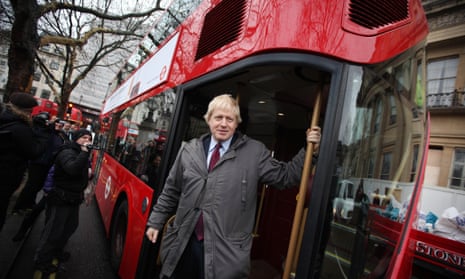
Comments (…)
Sign in or create your Guardian account to join the discussion